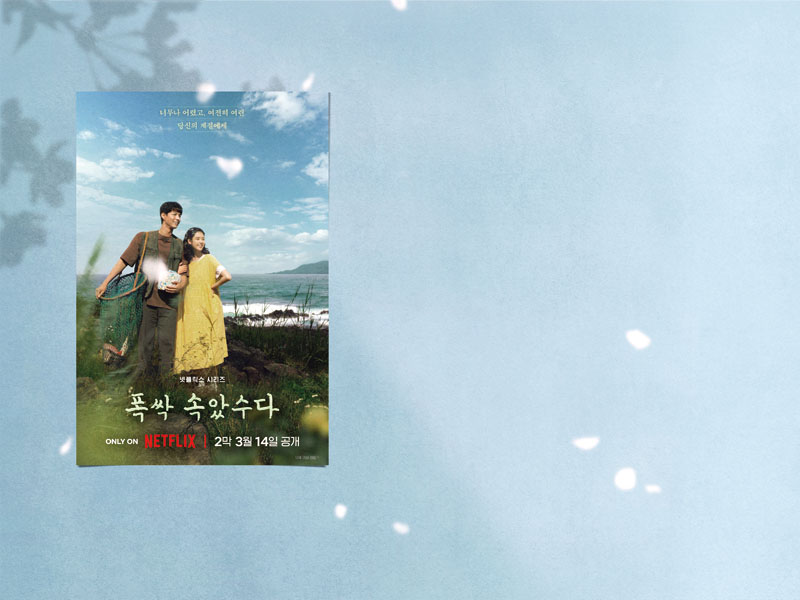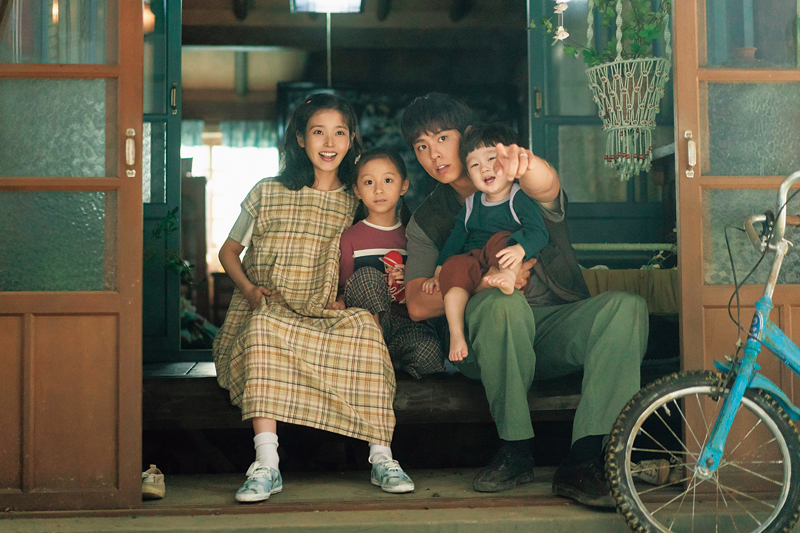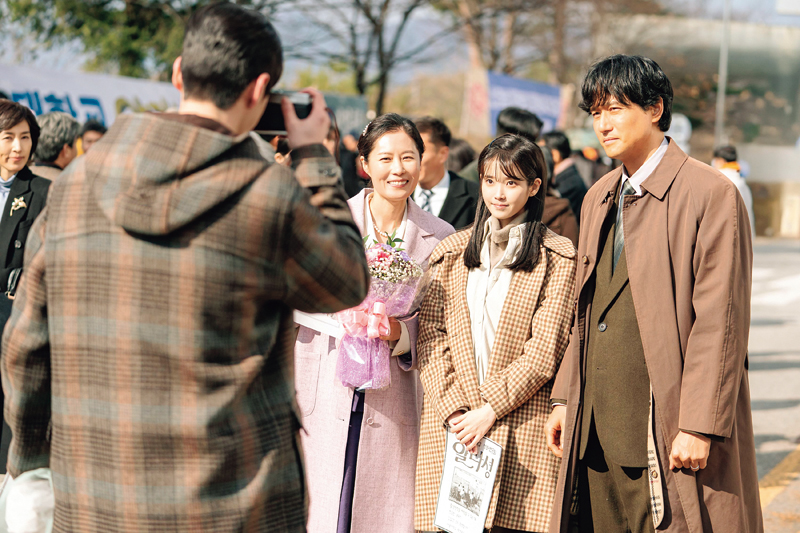The Netflix original series When Life Gives You Tangerines follows a Jeju Island family through the turbulent tides of modern Korean history. Steeped in Korean sentiment and atmosphere, the drama surprisingly moved viewers not only at home but around the world.

Set on Jeju Island, When Life Gives You Tangerines follows its main characters’ lives from the 1960s to the present. The TV drama has resonated with viewers, inspiring themed events and fan visits to filming locations.
Courtesy of Netflix
When Netflix released the 16-episode series When Life Gives You Tangerines in March this year, expectations were modest. Many doubted that a family drama could garner much attention amid Netflix’s fast-paced, genre-driven library. To say the outcome surpassed all expectations would be a broad understatement, considering the depth of its impact.
Heralded as “the best Korean drama in recent years,” the series received nominations in eight categories at the 61st Baeksang Arts Awards in Korea this past May, ultimately winning four, including Best Drama and Best Screenplay. It also scored 9.2 on the global review platform IMDb and achieved a perfect 100 percent rating on the Rotten Tomatoes Tomatometer — the highest ever for a Korean show.
Kim Won-suk’s masterful direction blended seamlessly with Lim Sang-choon’s well-crafted script. Set on picturesque Jeju Island, off the southern tip of the Korean peninsula, When Life Gives You Tangerines revolves around Ae-sun, a poor girl who aspires to be a poet; Gwan-sik, her childhood friend and eventual husband; and Geum-myeong, their eldest child and only daughter. The series follows their joys and sorrows against the backdrop of Korea’s post-war transformation from poverty to global powerhouse. Geum-myeong serves as narrator, describing the stages of her family’s journey.
Departing from the standard practice of releasing an entire season at once, the episodes were released four at a time. Nevertheless, the show sustained strong viewer interest and consistent buzz from start to end. While viewers in their twenties and thirties were the target audience, the series also appealed to middle-aged and older viewers, who had experienced the emotions and challenges of the years portrayed on screen.
KOREAN SENTIMENT
When Life Gives You Tangerines struck a deep chord with Korean viewers from the very first episode. Gwang-rye — Ae-sun’s mother, one of the traditional women divers of Jeju Island who harvest seafood through breath-hold diving — reminded many of the strength and sacrifice of their own mothers. The show’s early episodes take place during the 1960s and 1970s, a time of national reconstruction, when rapid economic development became the country’s foremost priority. Mothers of that generation labored relentlessly, often pushing their limits, driven by the resolve that their children should never feel deprived.
When young Ae-sun is voted class president but forced to give way to a rich boy and settle for vice president, Gwang-rye consoles her, saying, “I’m the poor one, not you. Don’t hang back. Live your life to the fullest.” These words reflect the hopes of many parents in the years following the Korean War, a time when survival outweighed all else. Gwang-rye urges her daughter to make the most of her life, even as she herself continues to sustain the family through grueling diving work, ultimately passing away at just twenty-nine. She represents a generation for whom survival left no space for dreams or personal success — luxuries beyond reach.
Ae-sun’s life proves no less unforgiving. After losing her mother at the age of ten, she takes on the burden of caring for her half-siblings, her stepfather being unable to support the family. She dreams of escaping her stifling island life, attending college, and becoming a poet. But reality offers nothing beyond endless toil — like an ox, she works the fields, harvests cabbages, and hauls them to market just to eke out a living for her family.
It is Geum-myeong who fulfills the dreams her parents could not during an era shaped by survival and hardship. She leaves the island her mother had longed to escape to attend one of the country’s top universities. After years of perseverance, she starts a successful online education company, and also fulfills her mother’s life-long dream of publishing her poetry. The realistic depiction of Geum-myeong’s journey resonated with viewers. As her life moves through moments of joy and hardship, the emotions experienced by the characters within — pain, despair, hope, and longing — are conveyed with striking sincerity. That emotional truth is what has allowed viewers to connect so deeply with the story, many of them sharing that it moved them to tears for the first time in years.
UNIVERSAL THEMES
When Life Gives You Tangerines is deeply rooted in Korean identity. Its Korean title, Pokssak sogatsuda, means “thank you for your hard work” in Jeju dialect, immediately signaling a strong sense of place. The island vernacular is unfamiliar to most Koreans, and the series features extended dialogues in this distinctive and often difficult-to-understand speech. Subtly woven into the narrative are elements of Jeju’s traditional culture, the weight of patriarchal norms experienced by women, and the sweeping changes of modern Korean history.
Due to this strong regional and cultural specificity, few expected the show to be a global sensation. But it proved to be a hit throughout its run, not only with Korean viewers but also audiences around the world, topping Netflix’s non-English-language rankings and reaching third overall on the platform’s global chart. It was especially popular across much of Asia and even Latin America; in Brazil, a local supermarket hosted a group viewing of the finale, underscoring the universal appeal of the series.

Dubbed into 18 languages, the drama connected with audiences worldwide through careful translation and voice work that preserved each character’s emotional depth.
Courtesy of Netflix
On social media, international fans launched a viral trend called “My Own Gwan-sik.” Gwan-sik, the quietly resilient male lead worn down by a lifetime of sacrifice, embodies the quintessential Korean father figure of his generation. At the same time, he is portrayed as a devoted husband whose support for Ae-sun is unwavering.
Deeply moved by the character, fans began sharing photos of their own fathers with captions like “My father is my Gwan-sik.” Others posted couple photos with messages such as “I’m going to marry my own Gwan-sik,” and some shared warm snapshots of married life with the phrase, “I already found my Gwan-sik.”
Conveying heartfelt admiration for Gwan-sik’s quiet dedication and sacrifice, these posts ultimately highlight how the universal theme of family can transcend borders, languages, and cultures. That emotional connection is what made this quintessentially Korean show a beloved favorite worldwide.
FAMILY NARRATIVES
For Koreans, who experienced a distinctive period marked by strong family values during the nation’s modernization, family narratives are deeply rooted in storytelling tradition. However, by the 2010s, single-person households approached 30 percent of the population, and Korean society began shifting toward greater emphasis on individual lives over traditional family structures.
This societal trend has also shaped Korean television, where melodramas, romances, and genre-based series have increasingly overtaken family dramas in popularity. The emergence of global digital platforms like Netflix has further driven this change in favor of more universally appealing content such as thrillers. In this landscape, When Life Gives You Tangerines stands apart.

The drama explores universal themes — youthful dreams and setbacks, family conflict and reconciliation, and unexpected farewells — evoking a strong emotional response from a wide audience.
Courtesy of Netflix
“Cultural discount” refers to the tendency of cultural products to diminish in value when introduced to unfamiliar cultural contexts due to differences in language, customs, religion, and other factors. However, with the growth of social media and platforms like YouTube, this effect has steadily declined. The powerful image of global audiences shedding tears over a Korean TV drama illustrates how content grounded in distinctive local culture can break down cultural barriers and become a driving force for global success.
In an era of increasingly diverse tastes and interests, creating content that resonates with a global audience remains a significant challenge. Yet the remarkable success of When Life Gives You Tangerines shows how family narratives continue to play a powerful and engaging role in the Korean entertainment industry.